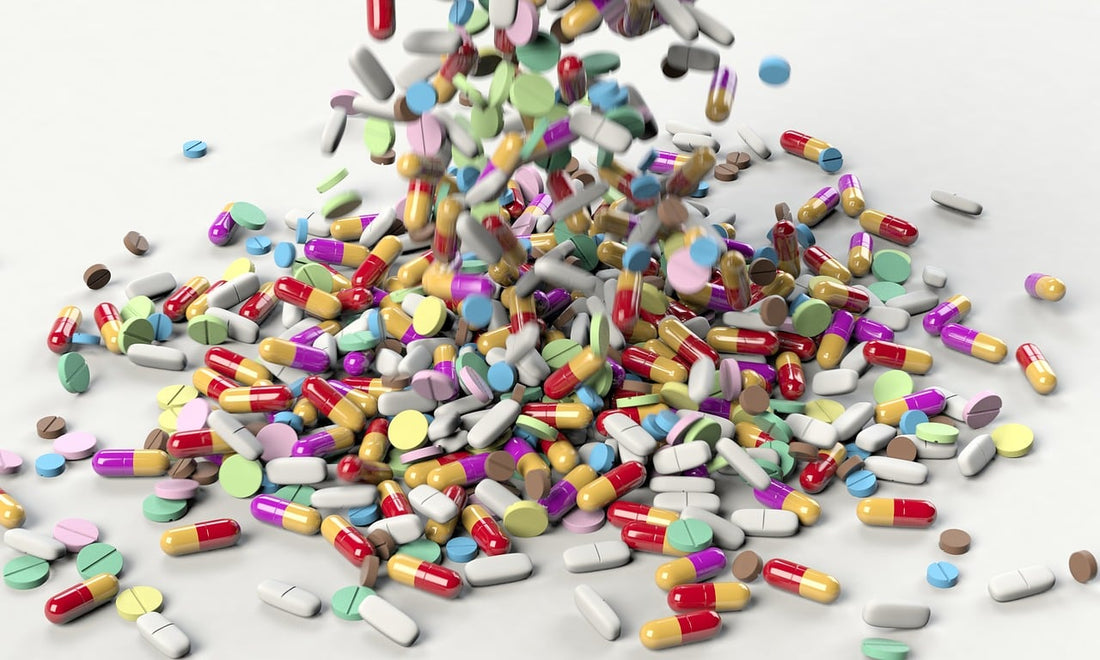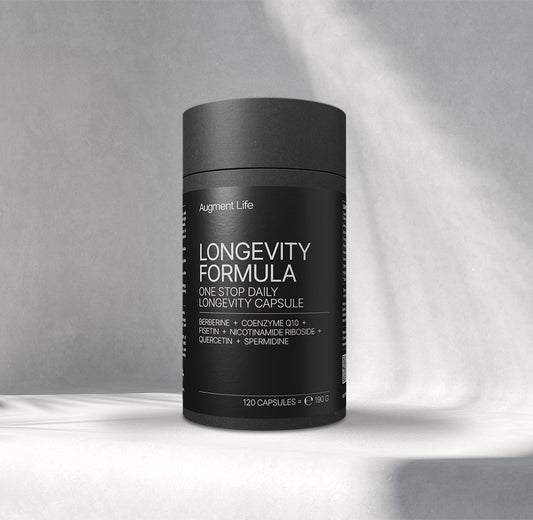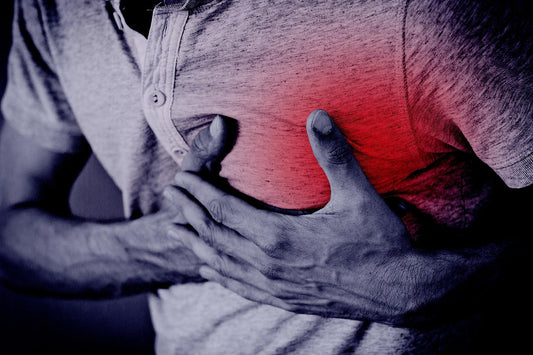Prendiamo volentieri integratori per aiutare la nostra immunità, forza e longevità. Questi integratori spesso contengono una miriade di composti appositamente formulati, come minerali, vitamine o estratti vegetali. Sebbene la maggior parte di queste molecole siano naturali, sorge una questione di biodisponibilità del farmaco. Quanta parte dell'integratore ingerito viene effettivamente metabolizzata e utilizzata dal nostro corpo?
Come possiamo essere certi di acquistare gli integratori giusti e di non sprecare soldi in prodotti che saranno solo espulsi dal nostro corpo? Continua a leggere e scopri di più nel resto dell'articolo.
Cos'è la biodisponibilità?
Biodisponibilità è il termine utilizzato per descrivere la quantità di nutrienti presenti nel cibo o nell'integratore che il nostro corpo utilizzerà attivamente. Maggiore è la biodisponibilità di un prodotto, maggiore sarà la quantità del suo principio attivo che verrà distribuita alla parte del corpo desiderata.
Il processo di un nutriente che diventa biodisponibile attraversa le seguenti fasi:
- rilascio dalla formulazione originale (cibo, capsule, polvere ecc.),
- assorbimento,
- distribuzione,
- metabolismo,
- eliminazione.
Un buon integratore dovrebbe avere un'elevata biodisponibilità, altrimenti la maggior parte del prodotto non verrà metabolizzata e verrà espulsa dal corpo, principalmente tramite l'urina. Inoltre, in tal caso il prodotto non mostrerà gli effetti promessi, il che deluderà presto il cliente.
È importante distinguere l'assorbimento dalla biodisponibilità. L'assorbimento descrive quanto bene il principio attivo degli integratori può entrare nel flusso sanguigno. Alcuni esperti ritengono ancora che la vera biodisponibilità sia l'ingresso della molecola nel flusso sanguigno 1.
Tuttavia, la biodisponibilità è in realtà una sottocategoria dell'assorbimento e descrive come l'ingrediente entrato nel flusso sanguigno verrà utilizzato dal corpo. La biodisponibilità è anche descritta attraverso la velocità con cui un certo integratore viene assorbito e utilizzato.
Come posso essere certo che la biodisponibilità degli integratori che assumo sia elevata?
Le qualità degli integratori che dovresti controllare quando li acquisti sono:
- purezza,
- formulazione,
- interazione tra gli ingredienti che contengono.
Se un integratore fallisce in questi aspetti, non sarà biodisponibile come altri. Il primo punto appare logico. Più un integratore è nella sua forma pura, più alta sarà la sua biodisponibilità. In parole povere, se stai acquistando magnesio, ma solo il 60% di magnesio puro è presente in quelle pillole, la biodisponibilità non può essere superiore al 60%.
Evitate integratori con bassa purezza e molte molecole "filler" che aumentano solo il volume del prodotto. Alcuni di questi filler possono anche fare più male che bene, soprattutto se siete intolleranti al lattosio o non riuscite a metabolizzare il glutine.
Inoltre, la biodisponibilità dei farmaci sarà spesso potenziata dall'associazione con le biomolecole con cui interagiscono. L'esempio più noto è la formulazione di ferro e vitamina C. La biodisponibilità del ferro sarà aumentata più volte, anche se si mangiano solo cibi ricchi di vitamina C. Tuttavia, alcuni ingredienti avranno un impatto negativo sulla biodisponibilità di altri. Ecco perché è una buona idea testare prima le compatibilità e associare gli integratori a molecole di supporto.
Per quanto riguarda l'abbinamento, gli integratori di solito devono essere ingeriti con determinati tipi di cibo. Ad esempio, le vitamine che sono solubili nei grassi hanno una biodisponibilità maggiore se assunte insieme a cibi, appunto, grassi. Altri cibi, come fagioli e lenticchie, possono impedire l'assorbimento di zinco e ferro. Questi cibi hanno un alto contenuto di acido fitico che lega i minerali e ne impedisce l'assorbimento2.
Tuttavia, la biodisponibilità degli integratori va oltre queste regole generali ed è determinata in larga parte già durante la preparazione dell'integratore a livello farmacologico.
Come migliorare la biodisponibilità degli integratori
Ci sono molti approcci che si possono adottare per migliorare la biodisponibilità degli integratori, ma possono essere per lo più suddivisi in modifiche tecniche e chimiche. Queste si riferiscono principalmente al miglioramento della distribuzione dei principi attivi nel sito specifico del corpo.
Alcuni dei modi per migliorare la distribuzione degli integratori nei tessuti sono l'utilizzo di:
- nanoparticelle,
- liposomi,
- microincapsulazione,
- biomateriali polimerici come chitosano o ciclodestrine.
Si tratta di tecniche più recenti che possono essere accompagnate da altre già note per migliorare la biodisponibilità, come l'essiccazione a spruzzo o la liofilizzazione delle formulazioni sotto flusso di azoto 3.
Un altro modo per migliorare farmacologicamente la biodisponibilità degli integratori è inibire le funzioni corporee che impediscono il loro assorbimento. Esempi noti sono gli enzimi dello stomaco e dell'intestino chiamati pompe di efflusso, che trasportano facilmente fuori il principio attivo. Questi possono essere inibiti con ingredienti biocompatibili che possono essere aggiunti nella formulazione dell'integratore.
La biodisponibilità può anche essere migliorata considerando attentamente il tipo di molecola che rappresenta il principio attivo. Le molecole bioattive hanno spesso strutture diverse, a seconda dei sottogruppi a cui sono legate. Contengono ancora la "struttura portante" del principio attivo, ma i loro sottogruppi possono essere modificati per aumentare l'assorbimento e la bioefficacia.
Questo è molto importante quando si ha a che fare con estratti vegetali come flavonoidi e steroli che sono difficilmente assorbibili in grandi quantità. La molecola di quercetina mostra una biodisponibilità molto maggiore rispetto alla sua molecola "madre", la rutina, e molti flavonoidi diventano altamente assorbibili se miscelati con proteine del siero del latte o estratti di latte4.
Gli integratori di Augment Life e la loro biodisponibilità
Augment Life offre la seguente lista di integratori:
• Mononucleotidi di nicotinamide, in polvere e in capsule,
• Trans-resveratrolo, in polvere e in capsule,
• Quercetina,
• Estratto di tè verde,
• Acido ialuronico,
• Coenzima Q10,
• Creatina monoidrato,
• Lievito di riso rosso,
• Peptidi di collagene,
• Glicinato di magnesio.
Tutti gli integratori di Augment Life sono preparati nella loro forma più pura e biodisponibile. Ad esempio, il collagene è meglio assorbito sotto forma di peptidi idrolizzati che non di collagene a catena lunga. Lo stesso vale per il magnesio che offriamo sotto forma di glicinato, e per la creatina che puoi acquistare sotto forma di creatina monoidrato, ovvero quella meglio assorbita dal corpo.
Riferimenti:
- Rein MJ, Renouf M, Cruz-Hernandez C, Actis-Goretta L, Thakkar SK, da Silva Pinto M. Biodisponibilità dei composti alimentari bioattivi: un percorso impegnativo verso la bioefficacia. Br J Clin Pharmacol. 2013 Mar;75(3):588-602. doi: 10.1111/j.1365-2125.2012.04425.x. Gupta RK, Gangoliya SS, Singh NK. Riduzione dell'acido fitico e miglioramento dei micronutrienti biodisponibili nei cereali alimentari. J Food Sci Technol. 2015 Feb;52(2):676-84.
- Munin A, Edwards-Lévy F. Incapsulamento di composti polifenolici naturali; una revisione. Pharmaceutics. 2011 Nov 4;3(4):793-829. doi: 10.3390/pharmaceutics3040793.
- Benzie IF, Chung WY, Wang J, Richelle M, Bucheli P. Maggiore biodisponibilità della zeaxantina in una formulazione a base di latte di bacche di goji (Gou Qi Zi; Fructus barbarum L.). Br J Nutr. 2006 Jul;96(1):154-60. doi: 10.1079/bjn20061796.
- Tosif MM, Najda A, Bains A, Krishna TC, Chawla P, Dyduch-Siemińska M, Klepacka J, Kaushik R. Una revisione completa sull'interazione dei concentrati di proteine del latte con i polifenoli di origine vegetale. Int J Mol Sci. 2021 Dec 17;22(24):13548. doi: 10.3390/ijms222413548.











